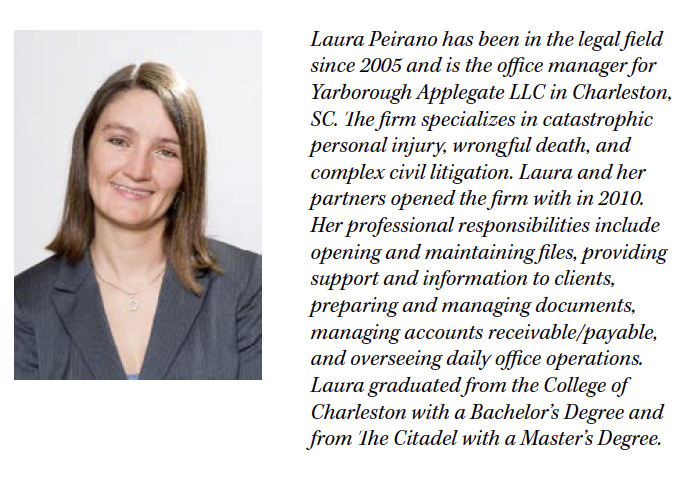Methadone and other Opioids in Client Records
In the Fall of 2011, I performed my Masters level practicum at a county run methadone clinic and rehabilitation center, providing clients methadone maintenance therapy (MMT), otherwise known as medication assisted treatment (MAT). When I began my Masters program in Psychology and Clinical Counseling, I did not plan to do substance counseling. I also had not planned to stay in the legal field. I now realize that both my practicum and degree have benefited me in my interactions with legal clients and my knowledge of diagnoses and prescriptions as they pertain to clients. Like I once did, others in the legal field may misunderstand clients’ medical records or have preconceived notions if they see methadone or other opioids listed in blood test results or on a prescription list.
Many people, and many articles, focus on the issue of supplying an opioid, such as methadone, to a person who is dependent on opioids. This debate is fervently discussed, with some proponents advocating for the closure of all methadone clinics and others supporting this type of treatment. (Lopez, G. (2017) https://www.vox.com/science-and-health/2017/7/20/15937896/medication-assisted-treatment-methadone-buprenorphine-naltrexone.)What is not contested is that opioids are often prescribed after injury or surgery and can be addictive, and some legal clients may face this reality (Cohen, R. (2017) https://www.reuters.com/article/us-health-surgery-pain-meds/oversupply-of-pain-pills-after-surgery-helps-fuel-opioid-epidemic-idUSKBN1AI24V.)This article is not intended to debate the use of methadone or government funded clinics; rather, it is a brief synopsis of methadone and other opioids so that client medical records can be more fully understood.
According to Cohen, the opioid addiction epidemic has been fueled by an oversupply and over-prescription of addictive pain medicine. In Cohen’s article, Dr. Bicket calls the mistake of doctors a “one-size-fits-all approach” to prescribing medicine after surgery rather than providing personalized patient care (para. 5). According to the Centers for Disease Control and Prevention (2017), approximately one in five Americans is prescribed opioids in a doctor’s office, a rate that steadily rose during the five-year data collection, though the amount of pain reported did not increase (https://www.cdc.gov/drugoverdose/data/prescribing.html). Opioids can be naturally derived from the opium plant, semi-synthetic, or synthetic. They are physiologically addictive and can lead to dependence. They attach to opioid receptors in the body’s nervous system and other tissue and block pain, providing relief and a euphoria the body cannot naturally produce (Opioid, (2018) https://en.wikipedia.org/wiki/Opioid). Addiction is recognized as a brain disorder and includes the compulsive use and abuse of a substance or substances that leads to disruption in daily work/school, family, and/or social functioning (Metcalf, E. (2012) https://www.webmd.com/pain-management/features/pain-medication-addiction#1). Dependence is the body’s tolerance, or need for more, of a drug to avoid unpleasant and unwanted withdrawal symptoms (Metcalf, E. 2012). The American Psychiatric Association’s Diagnostic and Statistical Manual of Mental Disorders, Fifth Ed., is used by clinicians to diagnose disorders and recognizes the misuse of opioids under the diagnosis of substance use disorder(American Psychiatric Association. (2013) “Diagnostic and Statistical Manual of Mental Disorders” (5th ed.) Arlington, VA: American Psychiatric Publishing).
Some of the common opioids prescribed include Fentanyl, OxyContin (oxycodone), Vicodin (hydrocodone), Demerol, Percocet, Dilaudid, codeine, and morphine (Hartney, (2018) https://www.verywellmind.com/ten-most-addictive-pain-killers-22506). Methadone is an opioid used to treat pain, but it is more often used to assist people with tapering off their opioid use (Earnshaw, V., Smith, L., Copenhaver, M. (2013). International Journal of Mental Health and Addiction, 11(1), 110-122. doi: 10.1007/s11469-012-9402-5). The brand names include Dolophine, Methadone HCI, and Methadose. Another opioid used to treat dependence is Suboxone, a mixture of buprenorphine and naloxone. Naloxone alone typically is used for opioid overdose, as it is an antagonist that binds to brain receptors to block the effect of opioids and can restore respiration within two minutes. The brand names of naloxone include Narcan and Evzio (“Naloxone,” (2018) https://en.wikipedia.org/wiki/Naloxone). When naloxone is combined with buprenorphine, it works together to more completely block euphoric effects, thereby reducing overuse or abuse (Stuckert, J. (2016) Psych Central. https://psychcentral.com/lib/how-is-suboxone-treatment-different-than-drug-abuse/).
Most laypeople may be unaware that the majority of methadone clinic patients are dependent on prescribed opioids rather than on illicit opioids like heroin. Perhaps the patients have previously been injured and had been prescribed them. They work, have families, and want to live a normal, active life. These clients are thoroughly processed using an intake protocol and have to commit to daily visits to the clinic, as well as weekly one-hour individual clinical counseling sessions throughout the course of treatment. Once the clients show a commitment to treatment, they are allowed to receive their methadone in a lockbox once a week and administer it to themselves at home. The size of the methadone dose typically is tapered, or lowered, until the client no longer has withdrawal symptoms and can stop treatment. Many clients also attend group counseling sessions, and a few clients receive inpatient treatment.
It is important to recognize that many legal clients also have been injured, had surgery, or experience chronic pain and therefore are prescribed opioids. They may not have realized the addictive properties of the prescription. They may only use them for a brief time, or unintentional dependence may necessitate the need for MMT. This does not make clients unworthy of representation and compensation. Negative stereotypes of methadone users focus on work ethic, hygiene, safety, family and community life, and even character (Earnshaw, V. et al., (2013) Id.).
It is easy to stereotype a person you have not interacted with based on the medical paperwork, and it can be detrimental to a client’s ability to fully recover if stereotypes affect the outcome of a case. These stereotypes and stigmas lead to discrimination and can hurt a legal case as well as the clients’ chances of recovery and healing. It is important that both plaintiff and defense counsel realize this and proceed without preconceived ideas.
Author Biography



 Categories
Categories